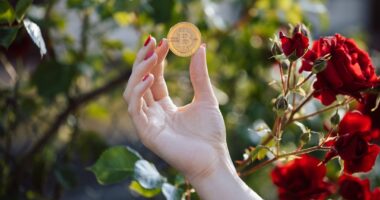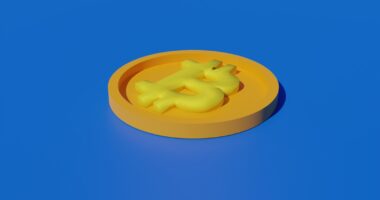Non-Fungible Tokens (NFTs) are unique digital assets that represent ownership or authenticity of specific digital content, such as art, videos, music, or tweets. Unlike fungible cryptocurrencies, NFTs cannot be exchanged on a one-to-one basis due to their unique nature. NFTs utilize blockchain technology, a decentralized digital ledger that records transactions across multiple computers.
This ensures each NFT’s uniqueness and prevents replication. When an artist creates an NFT, they generate a digital ownership certificate stored on the blockchain, providing a secure and transparent ownership record. These digital assets can be bought, sold, and traded on various online marketplaces.
The ownership and transaction history of each NFT are publicly accessible on the blockchain, offering transparency and immutability. NFTs have gained popularity as they provide creators with a new method to monetize digital creations. Artists can sell their work as NFTs, retaining ownership and receiving royalties on future resales.
Collectors can purchase NFTs to support artists and own verifiably authentic digital art. The growing interest in NFTs has led to a surge in the digital art market, with some NFTs selling for significant sums. As the technology evolves, NFTs have the potential to transform the digital art market and how we interact with digital assets.
Key Takeaways
- NFTs are unique digital assets that cannot be exchanged on a like-for-like basis, unlike cryptocurrencies.
- Creating an NFT involves minting the digital artwork on a blockchain platform and listing it for sale on NFT marketplaces.
- NFT marketplaces like OpenSea, Rarible, and Foundation provide platforms for artists to sell their NFTs and maximize their profits.
- The controversy surrounding NFTs includes ethical considerations about ownership and the environmental impact of blockchain technology.
- It’s important to be cautious of NFT scams and to verify the authenticity of NFTs before making a purchase.
- The future of NFTs is expected to see trends like fractional ownership and the integration of NFTs into virtual reality and gaming.
- NFTs have been making headlines in the news, with developments in the world of Ethereum, Bitcoin, and NFTs shaping the digital art market.
Creating Your Own NFT: A Step-by-Step Guide to Making and Selling Digital Art as NFTs
Choosing a Blockchain Platform and Setting Up a Digital Wallet
If you’re an artist interested in creating and selling your own NFTs, the process can seem daunting at first. However, with the right tools and knowledge, you can easily mint and sell your digital art as NFTs. The first step is to choose a blockchain platform that supports NFTs, such as Ethereum or Binance Smart Chain. Once you’ve selected a platform, you’ll need to create a digital wallet to store your cryptocurrency and NFTs. There are many different wallets available, so be sure to choose one that is compatible with the blockchain platform you’ve chosen.
Creating Your Digital Artwork and Minting Your NFT
After setting up your wallet, you’ll need to create your digital artwork. This can be anything from illustrations and animations to music and videos. Once your artwork is ready, you can use an NFT marketplace or platform to mint your NFT. Minting an NFT involves creating a unique token on the blockchain that represents your artwork. You’ll need to provide details about your artwork, such as its title, description, and file format, as well as upload the digital file itself. Once your NFT is minted, it will be assigned a unique identifier and added to the blockchain.
Listing and Selling Your NFT
With your NFT minted, you can now list it for sale on an NFT marketplace. There are several popular marketplaces where you can sell your NFTs, such as OpenSea, Rarible, and Foundation. When listing your NFT, you can set a price for it in cryptocurrency and choose whether to offer it as an auction or for a fixed price. Once your NFT is sold, the ownership will be transferred to the buyer, and you’ll receive payment in cryptocurrency.
Monetizing Your Creativity with NFTs
Selling your digital art as NFTs can be a lucrative way to monetize your creativity and connect with collectors from around the world.
Navigating the NFT Marketplaces: Where to Sell Your NFTs and How to Maximize Profits

Navigating the world of NFT marketplaces can be overwhelming, with so many platforms to choose from and varying fees and features. When deciding where to sell your NFTs, it’s important to consider factors such as user base, fees, curation process, and community engagement. OpenSea is one of the largest and most popular NFT marketplaces, offering a wide range of digital assets and a large user base.
It allows creators to mint and sell their NFTs with minimal fees and has a strong community of collectors and artists. Rarible is another popular marketplace known for its decentralized approach and unique governance token that allows users to vote on platform changes. Foundation is a curated NFT platform that focuses on supporting emerging artists and high-quality digital art.
It has a rigorous curation process and offers a more selective approach to listing NFTs. While getting accepted onto Foundation may be more challenging, it can provide exposure to a community of art enthusiasts and collectors who appreciate original and innovative work. When selling your NFTs, it’s important to consider the fees associated with each platform.
Some marketplaces charge a percentage of the sale price as a commission, while others may have listing fees or gas fees for minting NFTs on the blockchain. To maximize profits when selling your NFTs, it’s essential to engage with the community and promote your artwork through social media and other channels. Building a strong personal brand and connecting with potential buyers can help increase the visibility and value of your NFTs.
Additionally, offering limited editions or exclusive perks to collectors can create demand for your work and drive up prices. By carefully selecting the right marketplace for your NFTs and actively engaging with the community, you can maximize your profits and build a successful career as an NFT artist.
The Controversy Surrounding NFTs: Ethical Considerations and Environmental Impact
While NFTs have brought new opportunities for artists and collectors, they have also sparked controversy due to ethical considerations and environmental impact. One of the main ethical concerns surrounding NFTs is the issue of copyright infringement and intellectual property rights. With the ease of minting and selling digital art as NFTs, there have been cases of artists having their work stolen or plagiarized without their consent.
Additionally, some artists have raised concerns about the lack of regulation in the NFT space, which can make it difficult to enforce copyright laws and protect original creations. Another significant issue is the environmental impact of NFTs, particularly in relation to energy consumption. The process of minting NFTs on blockchain platforms such as Ethereum requires a significant amount of computational power, which in turn consumes a large amount of electricity.
This has led to criticism from environmental activists who argue that the carbon footprint of NFTs is unsustainable and contributes to climate change. As the popularity of NFTs continues to grow, there is an urgent need for sustainable solutions that minimize the environmental impact of blockchain technology. Addressing these ethical considerations will require collaboration between artists, platforms, and regulators to establish clear guidelines for copyright protection and intellectual property rights in the world of NFTs.
Additionally, efforts to reduce the environmental impact of NFTs are underway, with some blockchain platforms exploring alternative consensus mechanisms that are more energy-efficient. By addressing these ethical concerns and environmental challenges, the NFT space can continue to evolve in a responsible and sustainable manner.
The Rise of NFT Scams: How to Protect Yourself and Spot Fake NFTs
As with any emerging market, the rise of NFTs has also brought about an increase in scams and fraudulent activity. It’s essential for artists and collectors to be aware of potential scams and take steps to protect themselves when buying or selling NFTs. One common scam involves fake or plagiarized artwork being sold as NFTs without the original artist’s consent.
To avoid falling victim to this type of scam, it’s crucial to verify the authenticity of the artwork and ensure that it has been created by the rightful owner. Another scam to watch out for is phishing attacks that target users’ digital wallets or private keys. Scammers may use phishing websites or social engineering tactics to trick users into revealing their sensitive information, which can then be used to steal their cryptocurrency or NFTs.
To protect yourself from phishing attacks, it’s important to only use trusted websites and never share your private keys or wallet information with anyone. Additionally, buyers should be cautious when purchasing high-value NFTs and thoroughly research the seller’s reputation before making a purchase. It’s also advisable to use reputable escrow services or platforms that offer buyer protection in case of disputes or fraudulent transactions.
By staying informed about potential scams and taking proactive measures to protect yourself, you can safely navigate the world of NFTs and avoid falling victim to fraudulent activity.
The Future of NFTs: Trends and Predictions for the Digital Art Market

Immersive Experiences with AR and VR
One trend that is expected to continue gaining momentum is the integration of augmented reality (AR) and virtual reality (VR) technologies with NFTs. This will allow collectors to experience digital art in immersive ways, such as displaying virtual sculptures in their homes or interacting with animated artworks through AR applications.
Democratizing Access through Fractionalized Ownership
Another trend is the rise of fractionalized ownership of NFTs, which enables multiple investors to own shares of a high-value digital asset. This concept has the potential to democratize access to rare and expensive artworks by allowing individuals to invest in fractions of an NFT rather than purchasing it outright. Fractionalized ownership could open up new opportunities for collective investment in digital art and expand the pool of potential buyers.
Traditional Institutions Embracing NFTs
In addition to these trends, there are predictions that traditional art institutions will increasingly embrace NFTs as a legitimate form of art collection and curation. Museums, galleries, and auction houses may begin incorporating digital art into their collections through NFT acquisitions or hosting virtual exhibitions featuring NFT artworks. As the boundaries between physical and digital art continue to blur, we can expect to see more collaborations between traditional art institutions and the burgeoning world of NFTs.
NFTs in the News: Latest Developments and Updates in the World of Ethereum, Bitcoin, and NFTs
The world of Ethereum, Bitcoin, and NFTs is constantly evolving, with new developments and updates making headlines in the news. One recent development is the growing interest from celebrities and public figures in creating their own NFT collections. From musicians releasing exclusive albums as NFTs to athletes launching digital collectibles, there has been a surge in high-profile individuals entering the world of non-fungible tokens.
Another notable update is the increasing adoption of layer 2 solutions for Ethereum-based NFT marketplaces. Layer 2 solutions aim to address scalability issues on the Ethereum network by processing transactions off-chain before settling them on the main blockchain. This approach has the potential to reduce gas fees and improve transaction speeds for minting and trading NFTs on Ethereum-based platforms.
Furthermore, there have been discussions about potential regulatory changes for NFTs and cryptocurrency markets around the world. Governments are exploring ways to regulate the growing industry while balancing innovation with consumer protection. These regulatory developments will have implications for how NFTs are bought, sold, and traded in different jurisdictions.
As news continues to unfold in the world of Ethereum, Bitcoin, and NFTs, it’s important for artists, collectors, and investors to stay informed about the latest developments that may impact the market. Keeping up with news updates can help individuals make informed decisions about buying or selling NFTs while staying ahead of industry trends. In conclusion, non-fungible tokens have revolutionized the way we buy, sell, and collect digital art by providing artists with new opportunities for monetization while offering collectors verifiable ownership of scarce digital assets.
While there are ethical considerations surrounding copyright protection and environmental impact that need addressing, there are also exciting trends shaping the future of the digital art market through augmented reality integration, fractionalized ownership models, and increased adoption by traditional art institutions. Staying informed about potential scams and regulatory developments is crucial for navigating the evolving landscape of Ethereum-based marketplaces while maximizing profits as an artist or collector in the world of non-fungible tokens.
FAQs
What is an NFT?
An NFT, or non-fungible token, is a digital asset that represents ownership or proof of authenticity of a unique item or piece of content, such as digital art, videos, music, or other digital files.
How do you make an NFT?
To make an NFT, you need to create a digital asset, such as artwork, and then mint it on a blockchain platform that supports NFTs, such as Ethereum. This process involves creating a digital wallet, paying a gas fee, and uploading your digital file to the platform.
How do you sell an NFT?
To sell an NFT, you can list it on a marketplace that supports NFTs, such as OpenSea, Rarible, or Foundation. You can set a price for your NFT or list it for auction, and once sold, the ownership of the NFT is transferred to the buyer.
What is the scandalous world of digital art profits?
The scandalous world of digital art profits refers to the controversy and ethical concerns surrounding the sale of NFTs, including issues of copyright infringement, environmental impact due to the energy consumption of blockchain networks, and the potential for fraud and speculation in the NFT market.





